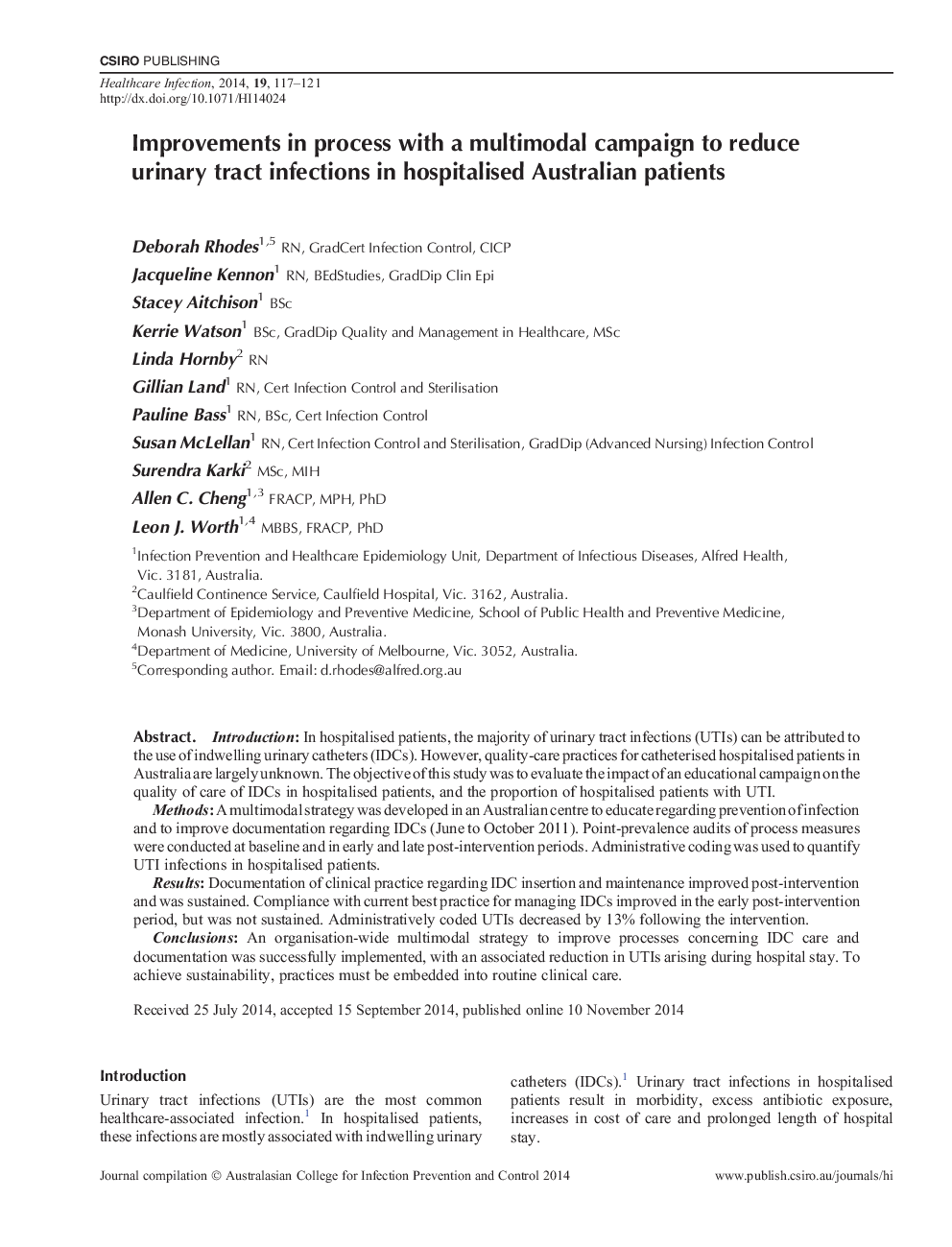| Article ID | Journal | Published Year | Pages | File Type |
|---|---|---|---|---|
| 2680201 | Healthcare infection | 2014 | 5 Pages |
IntroductionIn hospitalised patients, the majority of urinary tract infections (UTIs) can be attributed to the use of indwelling urinary catheters (IDCs). However, quality-care practices for catheterised hospitalised patients in Australia are largely unknown. The obj ective of this study was to evaluate the impact of an educational campaign on the quality of care of IDCs in hospitalised patients, and the proportion of hospitalised patients with UTI.MethodsA multimodal strategy was developed in an Australian centre to educate regarding prevention of infection and to improve documentation regarding IDCs (June to October 2011). Point-prevalence audits of process measures were conducted at baseline and in early and late post-intervention periods. Administrative coding was used to quantify UTI infections in hospitalised patients.ResultsDocumentation of clinical practice regarding IDC insertion and maintenance improved post-intervention and was sustained. Compliance with current best practice for managing IDCs improved in the early post-intervention period, but was not sustained. Administratively coded UTIs decreased by 13% following the intervention.ConclusionsAn organisation-wide multimodal strategy to improve processes concerning IDC care and documentation was successfully implemented, with an associated reduction in UTIs arising during hospital stay. To achieve sustainability, practices must be embedded into routine clinical care.
